-
Posts
23 -
Joined
-
Last visited
Content Type
Profiles
Forums
Blogs
Gallery
Events
Store
Posts posted by ispn
-
-
17 hours ago, peter monahan said:
I spent two years in Bauchi State, just north of Jos, on the edge of the central plateau. I was teaching at a teachers' training college under the auspices of an organization called CUSO, a sort of canadian version of the Peace Corps. Bauchi State was just on the edge of the savannah country in n orthern Nigeria and perhaps one third of my students were Hausa, the rest being a mix, especially because my school was Chrisitian, not Muslim.
I was able to see traditional warriors and chiefs from Bauchi, Kano and Sokoto in my travels but only as a tourist and never got a close look at the weaponry. I had a very nice Turage sword which got lost in transit when I travelled out of Niger and a much less well made example which I managed to get home, but modern tourist work, as I was on a very limited budget and certainly not bididng on older pieces.
Your 'extended' blade is fascinating. I can imagine that it would seem very solid but not sure I'd trust my life to it on the battlefield. OTOH, it would certainly be a prestigious thing to carry and perhaps as strong as a one piece blade - only a sword smith could say for sure. Thank you for sharing it!
Fascinating Peter! Bauchi is an interesting area and if I'm not mistaken with a bit of a Kanuri population in the north as well. A pity about the sword that went missing. Most of the truly good swords seem to have ended up in the UK due to colonial bring backs. While France also holds quite a few from their colonies.
About the blade mount, I completely understand a bit of skepticism about how sturdy this would be in practice and I have to admit I haven't exactly been stress testing a 660 year old blade! However I've had probably ten or so of these pass through my hands over the years and all have given the impression of being quite sturdy and the wear and sharpening on the blades indicates they were used. Certainly these mounts give the impression of being just as sturdy as the full length blades.
In the case of this particular sword, it holds particular interest for me as the hilt and mounts themselves are probably the oldest I own and I suspect this sword left Africa quite a while ago. Certainly it predates, based on what I can ascertain from examples with collection dates, the 19th century and based on what I have to admit is some conjecture, I suspect the mounts date to before the 18th century. All good fun to imagine of course, proving it is another thing!
10 minutes ago, Trooper_D said:Thanks for the fascinating insight and for the additional example, ispn - this approach to reusing an old blade is completely new to me.
Thanks Trooper, just call me Iain by the way. It is indeed an interesting approach reflecting I think the high value placed on quality steel in these regions. Blades were and are revered and passed down for generations. I can't think of another instance where blades are mounted this way on a regular basis. Obviously it worked well enough to be considered worth doing! For some collectors it's a bit of a blemish I think to have a broken blade, but for myself, it's actually become an intriguing way to ID older blades.
0 -
-
Good eye! Yes, the sword uses a new forte to mount the European blade. The forte is secured to the hilt by a tang and thus the hilt is quite secure.
The blade in turn is then attached to the forte in quite an interesting manner. The forte is a quite thick piece of steel, the end of the steel is split and the blade inserted, pins are then forge welded at each end to secure the blade.
Oddly enough this is actually one of the sturdiest mounts I've encountered! Rock solid really without a mm of movement between the blade and the forte, this seems to have been a somewhat popular style for extending the life of blades and I've seen a number of these over the years on blades of various ages.
In any case, as odd as the mount seems, this is very much a fighting weapon and the sword has seen repeated sharpening on the blade. Here's an overlay with a complete Medieval sword of around the same age and likely from a similar workshop which used to be in the Alexandria arsenal.
0 -
I always wanted to visit northern Nigeria. Particularly Kano, Sokoto and Bida. Mind if I ask which part of the country you were in? Sadly it is not a good time to attempt travel in the area.
It's very much a niche area of study, but I'm glad others find it of interest as well!
Since I first started this thread one of the swords I posted before, with a medieval European blade dating to around 1350 was restored. I thought I might as well post the images to show it off properly.
0 -
Oddly enough plate and maille was not unknown....
 Couple photos attached of a cuirass used in Bornu and northern Cameroon and one on a rider. I've wanted one for ages and lost an auction on one just before Christmas. The attached example is from the British museum. The photo with the rider wearing one, you can see it under his padded over garment (which on its own was quite effective armour as well!).
Couple photos attached of a cuirass used in Bornu and northern Cameroon and one on a rider. I've wanted one for ages and lost an auction on one just before Christmas. The attached example is from the British museum. The photo with the rider wearing one, you can see it under his padded over garment (which on its own was quite effective armour as well!).
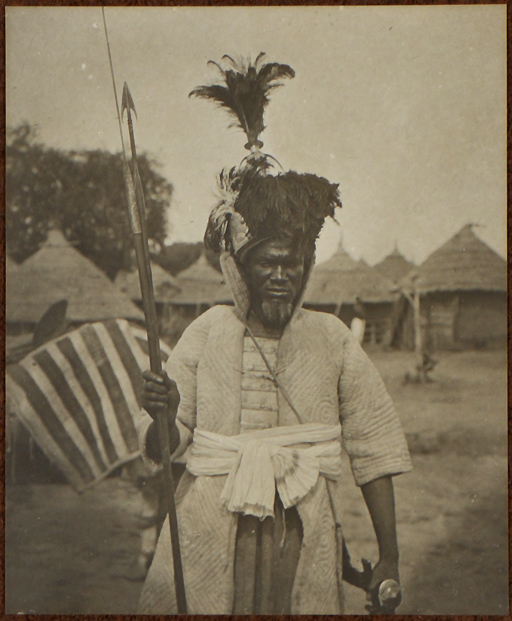
I've noticed in Nigeria the traditional durbars seem to have had the spears disappear by the 60s. Although they seem to still be around or were until recently in Cameroon. An image from Ngaoundere attached here shows a more recent scene. Credit for the image is: https://www.flickr.com/photos/mikarama/2666075674/in/album-72157606151530689/#
Generally I think the level of weaponry and armour in use by the elite of the Islamic kingdoms in the region is a surprise unless you've come across it before. Part of the fun for me with collecting in this field is dispelling the old trope of the savage with his spear and loincloth from Darkest Africa.
 0
0 -
-
1 hour ago, peter monahan said:
That is indeed an impressive lance head and pretty clearly - to me at least - not indigenous to North Africa. I don't recognize the style, though what you say about the armour piercing makes sense. Any other clues as to origins?
It is from modern day Northern Nigeria. Where the kingdoms and emirates employed cavalry for centuries, so very much indigenous! A near identical lance can be seen in "Weapons & Implements of Savage Races" by L Montague, 1921.
0 -
A very large lance head from Bornu or Northern Nigeria.
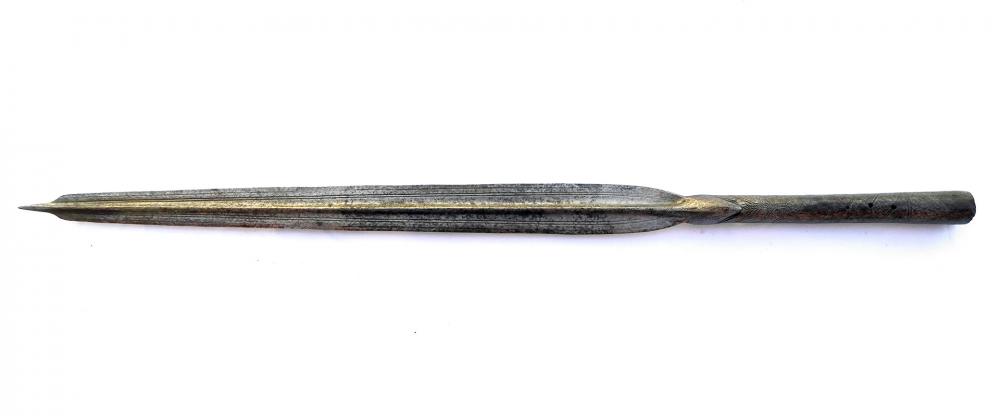
These were cavalry lances and you will notice the point is designed to pierce armour, while the shoulders where the blade meets the shaft are particularly large to absorb the shock of mounted use. Shown next to a takouba to illustrate the size.
0 -
Thanks for the warm welcome back Brian, I have to admit what I can offer is quite limited in scope but I am always happy to share! I had a bit of a break in focus in collecting for the last year but I will add a few additional images of the two swords shown above and a couple others as well.
First the 16th century blade. It has the remains of an inlaid running wolf mark and a deeply stamped mark which is usually associated with the Venice armouries.

The second sword shows a series of astral engravings (sun, moon, stars etc.) popular in Solingen, Germany made blades from the 17th and 18th century.

Finally this is an interesting piece showing a bit of a more recent trade link, I suspect this dates from 1900-1925 in terms of the mount, but the blade is a colonial European sabre. I am not sure of the exact pattern.
 0
0 -
It has been quite a while since I posted here! I thought members might enjoy seeing a spear and a few takouba I don't think I ever posted before.
The spear is an allarh, a type of all steel Tuareg lance.
The sword with brass on the guard is a 16th century Italian blade and very old mounts. The other sword a likely German blade from the 17th century and very old mounts as well.
A wonderful new year to all!
0 -
How, in Heaven's name, would they have found their way this far south?? Does the medieval one have an armourer's mark, on it, as a matter of interest?
Has anyone written the definitive work on these swords - or are you still completing the final chapter?

Actually there was a lot of trade between the Sahel states and the Mediterranean coast. In earlier periods this consisted of gold and slaves and salt. While in later periods other items like leather from the Hausa states was heavily traded (known as Moroccan leather in Europe at the time) as well as textiles. A somewhat more bizarre item, but heavily in demand in Europe, was ostrich feathers!
Going back down the routes were a variety of goods which included blades. This trade existed during the medieval period and was the reason for some of the earlier African empires like Mali or the Songhai empire sprang up in the regions they did.
For the medieval blade of mine - hopefully it doesn't violate the forum rules if I just put a link to my website. The blade features a cross fourche and split upright cross.
There is sadly not a definite book on these swords although there are some good article ("European Blades in Tuareg Swords and Daggers" by Briggs) but oddly enough since you mention it, one is in the works. ;)
0 -
That is a fantastic colecting field indeed!!
I assume not to easy to find?
Thanks! The pieces I've posted are fairly rare, in that some of them are quite old. The type as a whole does show up at auction fairly regularly. Particularly in the UK where they were common colonial bring backs (Nigeria in the case of the takouba and Sudan for the kaskara).
0 -
Thanks for your fascinating answer, ISPN. I never even realised this was a field of study but am now looking forward to seeing more of your photos to learn more!
Certainly not a popular field I guess! In some ways I'm grateful for that as purchasing pieces still remains semi affordable. Attached are a few more examples, some from other cultures and classed as different sword types from takouba.

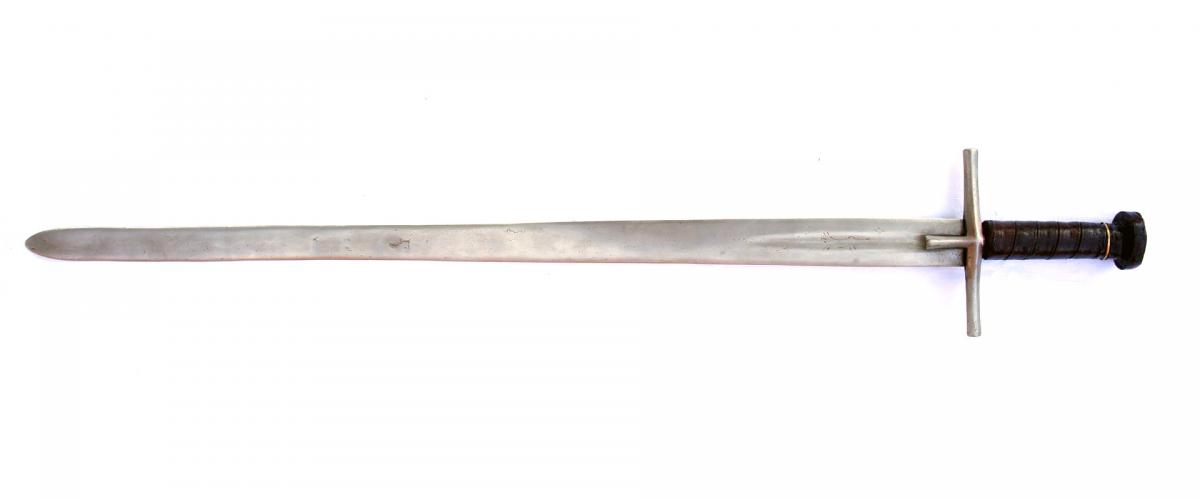
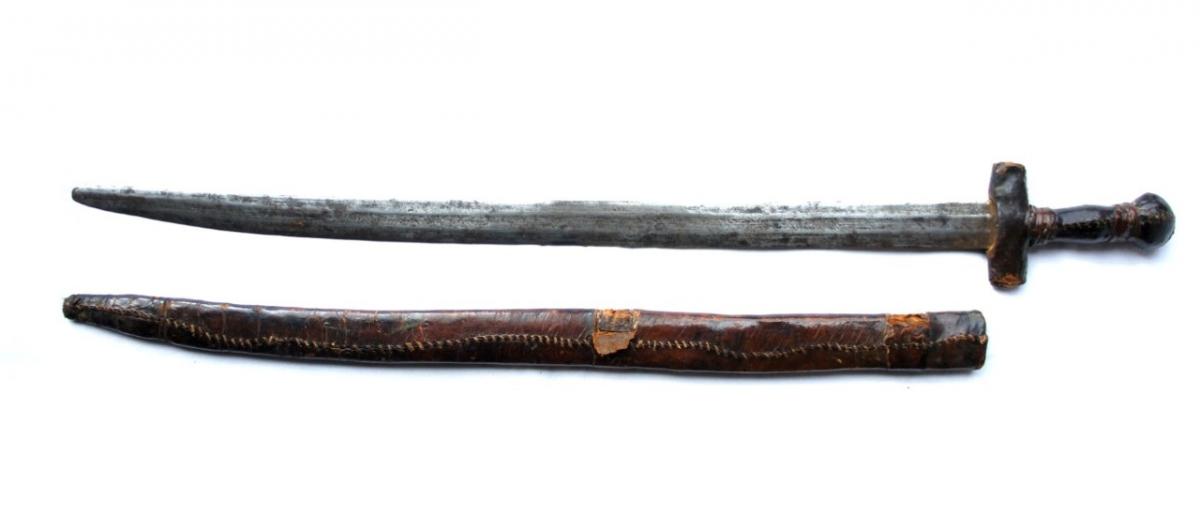
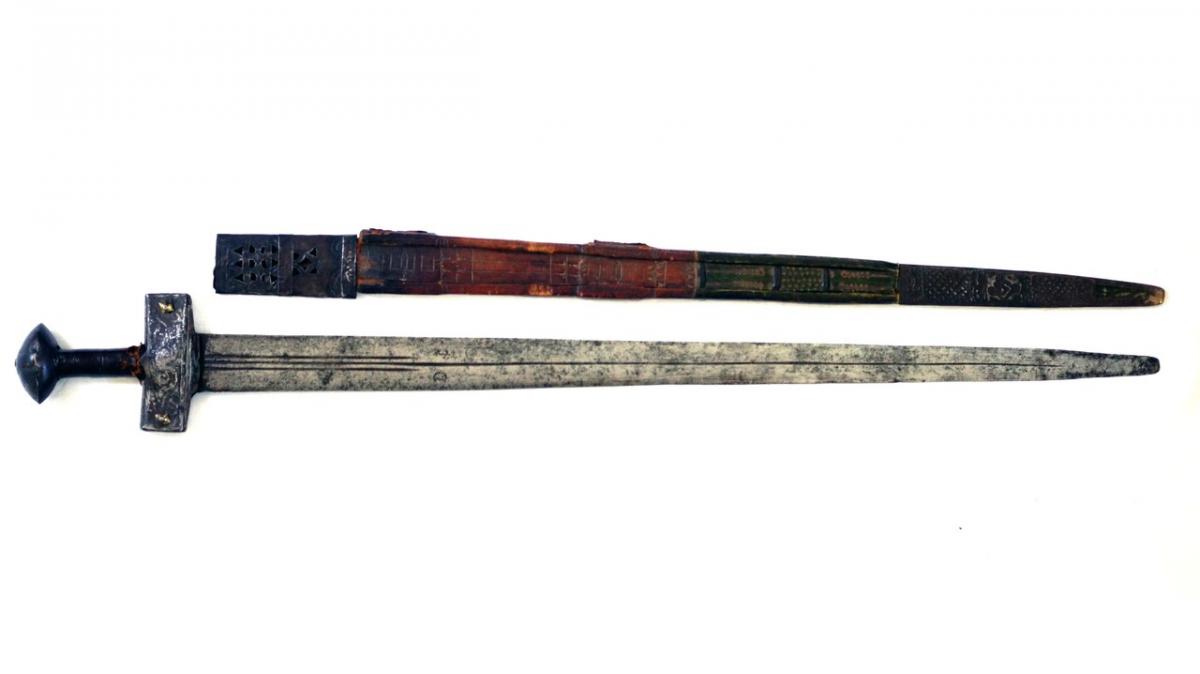
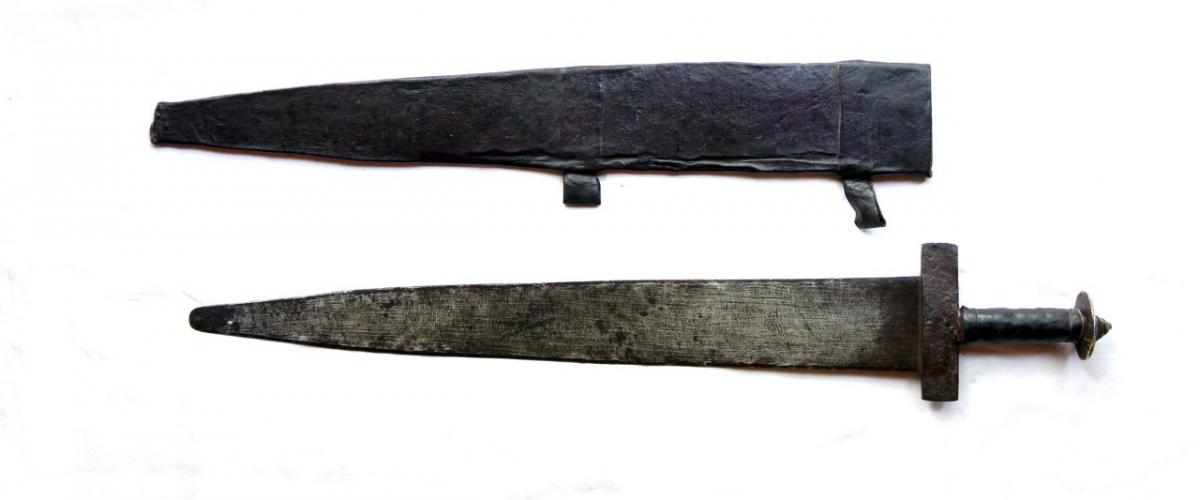
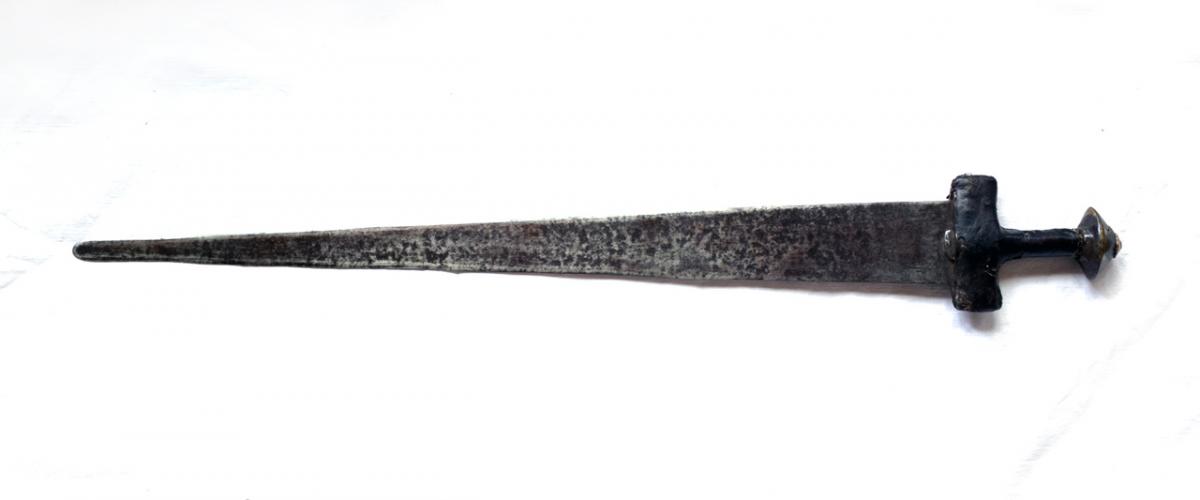 0
0 -
Well I can hopefully shed a little light on this. S. Terzian refers to Sarkis Terzian. He was an Armenian (1868-1815) who spent time in Egypt and Ethiopia and supplied quantities of arms to Menelik the II. These blades are usually from Solingen makers in Germany or British as you mentioned.
0 -
Thanks Brian and Trooper for you kind comments. I'll add a few other pieces to the thread soon.
To answer the question of use and function, many of these were battlefield weapons. Of the swords I posted #1, 3 and 6 have European blades. Several of them quite old (#3 is medieval).
The wide examples have locally made blades and are from Nupe or Hausa states. They are usually carried by palace officials or the bodyguards of the local emir. I have some older photos showing this style in use by cavalry as well. Others I have handled are not swords with a lot of 'presence' and thinner locally made blades. But still capable of delivering a nasty cut. Certainly most swords made in the 20th century had a mainly cultural role as status symbols.
Takouba were employed in a style of swordsmanship that focused on the drawcut and typically only the last 2/3rds of the blade are sharpened. An opponent without armour would not be uncommon and those with often had quilted armour (lifidi) although maille and even iron cuirass were also used.
Still, older swords usually feature sturdy mounts comprising iron pommels and iron guards. Hilts were refreshed throughout the life of a blade, which still occurs among the Tuareg.
0 -
I'm torn. I saw a fair bit of Tuareg work years ago in Nigeria, where the long drought of the 1970s had driven many of the tribe, and actually own a nice blade with a [carve wood] 'antelope horn' handle. The blade decorations and leather work certainly look as if they could be Tuareg but the handles are not like any I recall or have seen since, so I'm not convinced either way.
Could be Tuareg, but could be someone else's work too, IMHO, perhaps even Iraqi. Not a huge difference between many 'primitive' blades, given the materials used - common to much of the world - and the relatively simple styles, unless the piece has a really distinctive component, such as the 'Tuareg cross' handle in Ispn's first photo.
Ispn, how did you get into that unusual collecting field, if I may ask?
Peter
Hi Peter,
There are regional differences even in Tuareg work. Unfortunately as I mentioned I don't collect these newer items and so haven't bothered to examine them in great detail. Friends and fellow collectors who have been to the region I believe typically have mentioned them in the context of N. Mali and Niger. It's an odd style with no grounding in traditional types that I've ever been able to discover.
Of course in the context of saying it's Tuareg, that includes the fact that usually this sort of work was usually done by client castes of the Tuareg and other ethnic groups as well.
Oddly enough I got into the field because of an existing interest in European medieval arms and armour, African stuff was cheaper! Some types, such as takouba and kaskara have a similar visual form. After a few years I found myself completely fascinated by the history of the region (particularly Bornu, Hausa states and the Sokoto Caliphate) as well.
Iain
0 -
Just as a brief introduction I'm an African arms collector who recently joined the forum. My main focus is the takouba - a sword type that was common across much of West Africa and the Sahel and is perhaps best known for being carried by the Tuareg people, although it saw use among many other groups as well.
I thought some of the other members might enjoy seeing a few items from my collection.




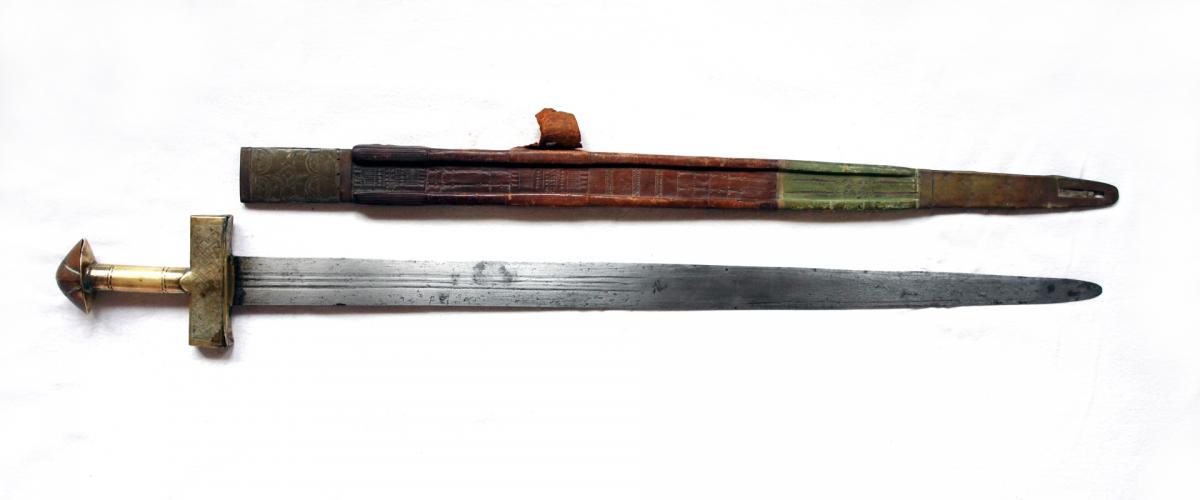
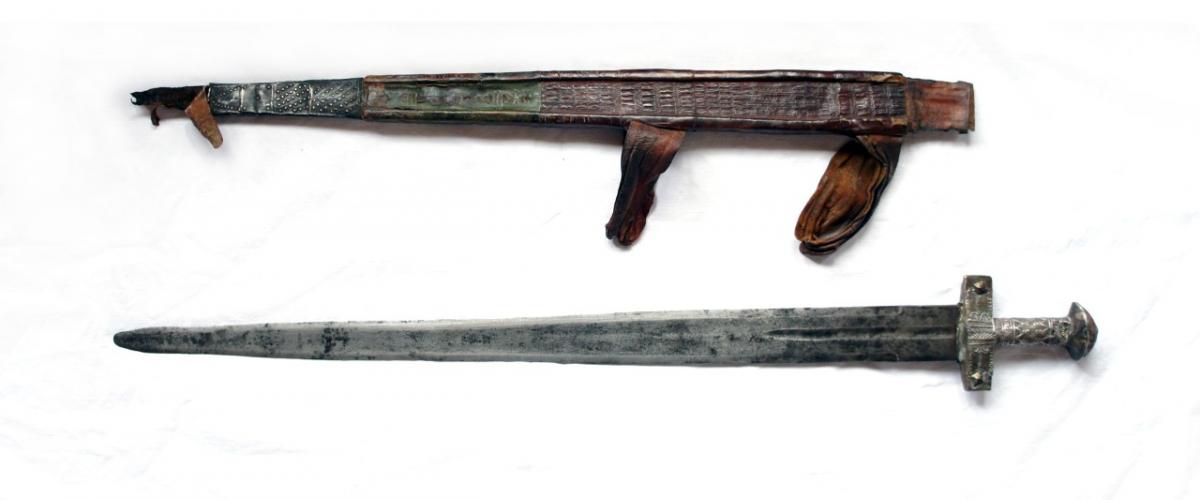
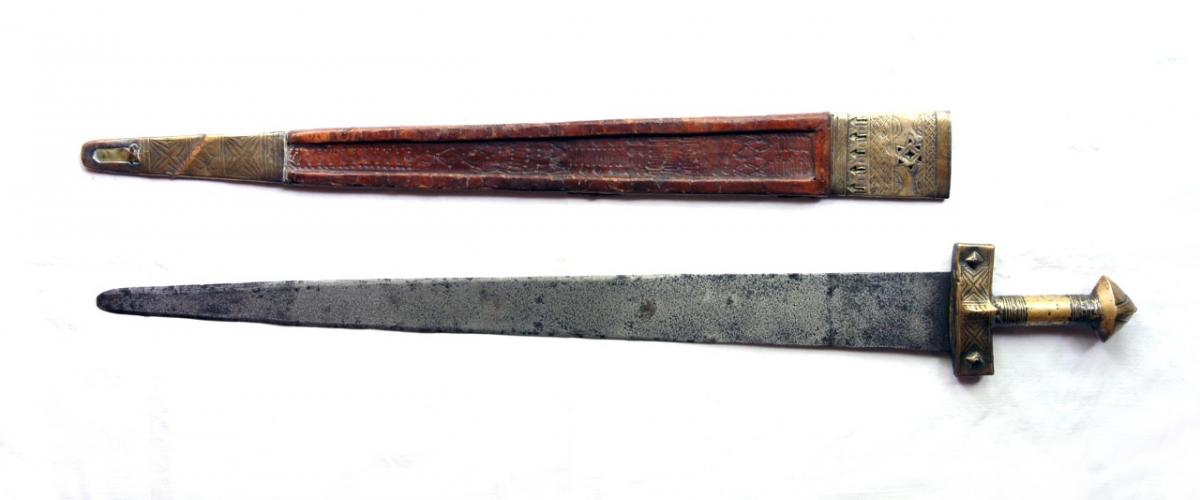 0
0 -
Hi Mervyn,
While I realize these forums are perhaps a little more oriented on the medals and militaria side I joined in the hope I could be of occasional use on African arms and armour as I simply enjoy sharing my collecting interests with others. I'll post a thread showing a few pieces shortly.
I did turn up one image of a Tuareg selling these.
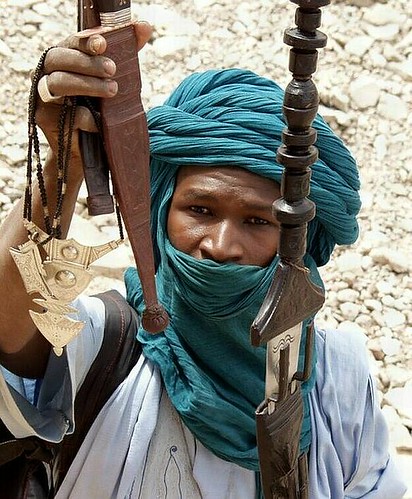
I've seen the occasional brass or copper bladed item as well.
0 -
I just joined recently, but am enjoying the forum. My main focus is actually Tuareg and Hausa arms, I'll have to make a thread showing a few.
It's quite possible this particular example did make it to Iraq. I'll try to dig up a few photos for you showing these in a modern Tuareg context - I don't usually archive them because they don't fit the period I collect within however they can be found fairly easily online. If you like I can PM you a few discussions from another forum. As you mention arm daggers are common, across the entire Sahel really. I'm attaching an example formerly in my collection with the classic Turaeg telek form. Also included an old photo showing on the right hand arm of the subject a telek.
All the best,
Iain

 0
0 -
This is actually a recent Tuareg item. The form is quite different from the traditional takouba (sword) and telek (arm dagger). These do showcase current Tuareg leather working skills quite well however.
0 -
I came across this thread recently and while I realize it is a few years old, I thought it might benefit from the attached article on the making of maille at Omdurman.
"Nigerian Panoply" by Bivar also contains a detailed analysis of three shirts from the western Sahel, two of then from Bornu. One of those described has inscribed links as well.
0





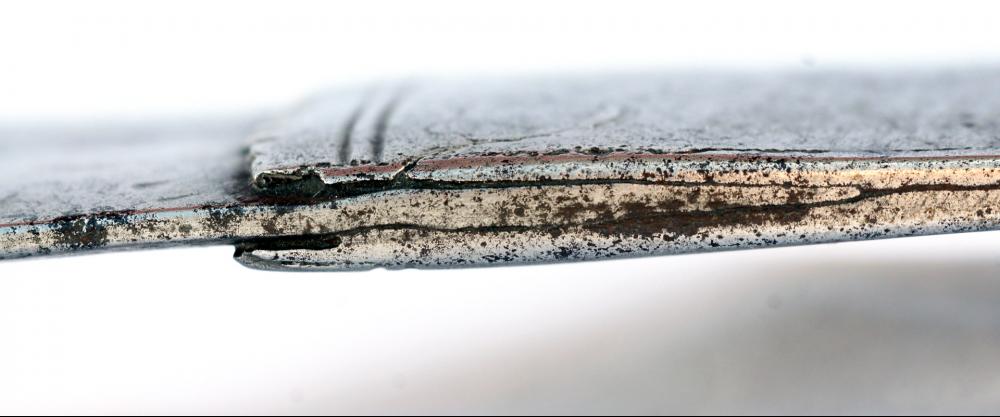
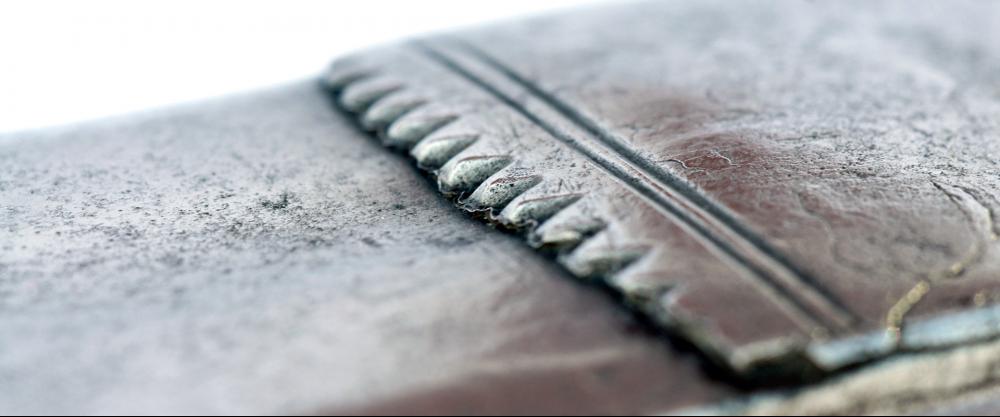
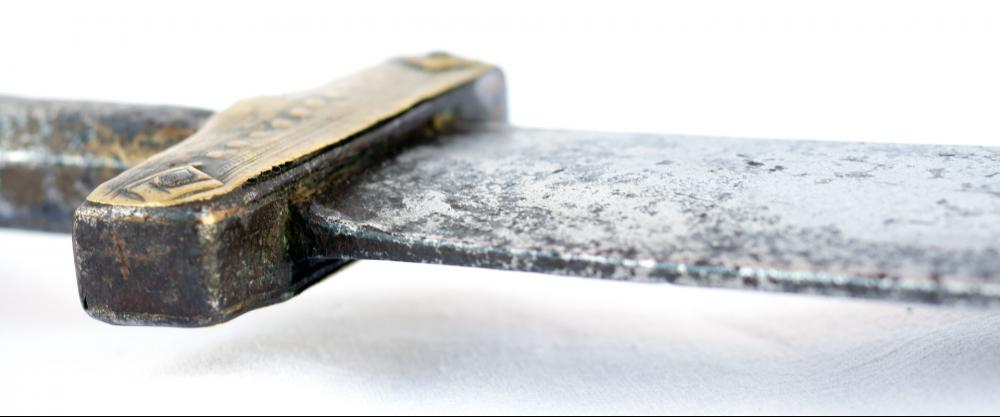
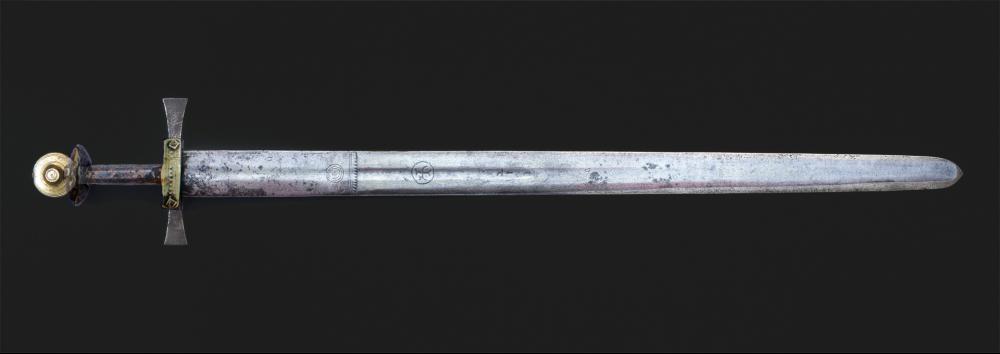
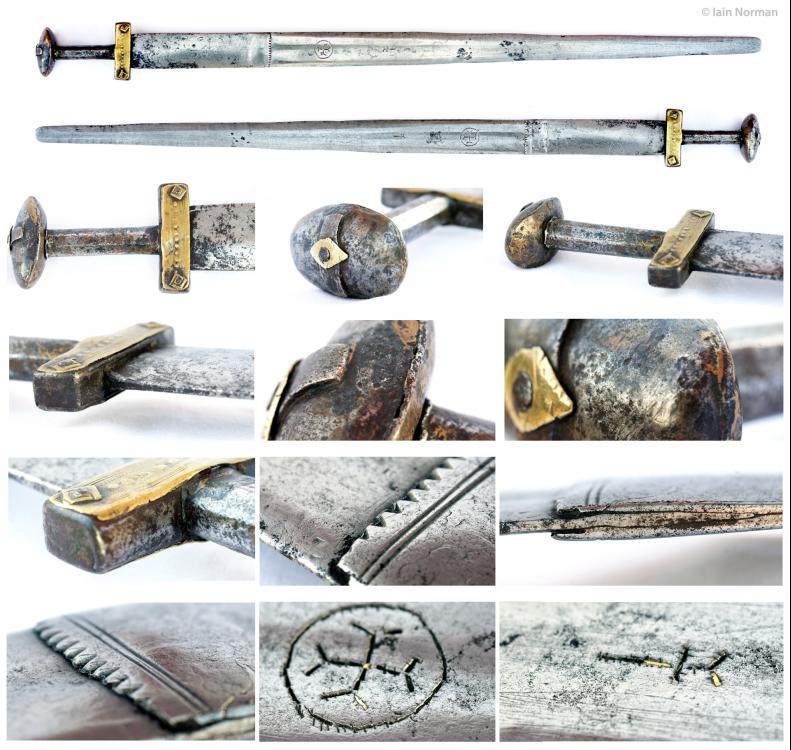

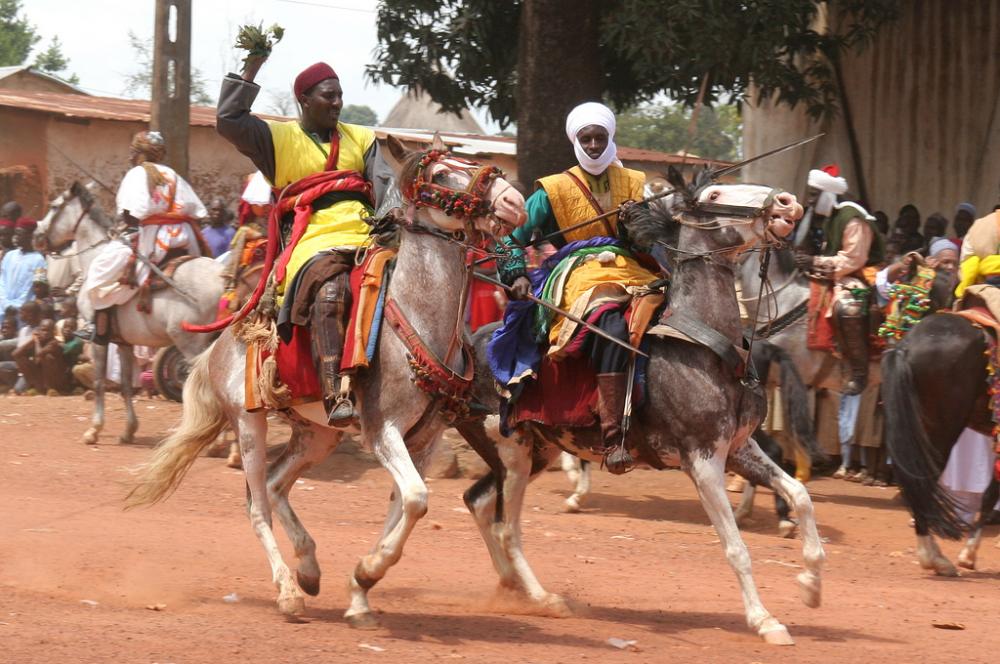
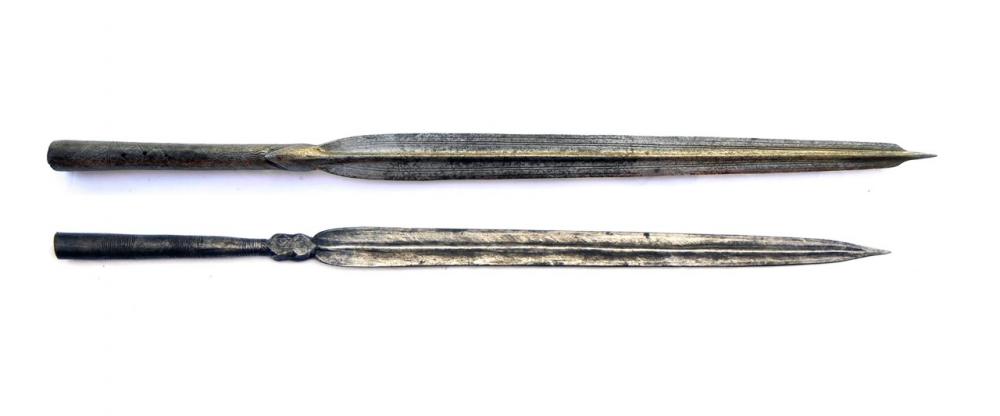


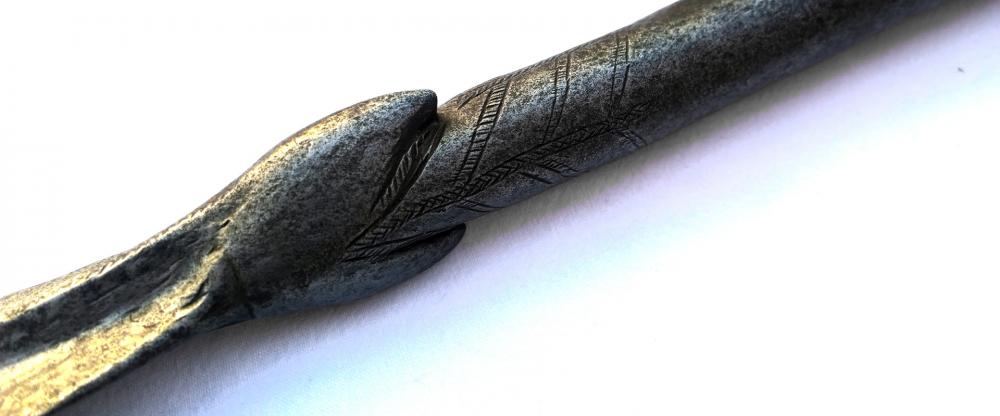
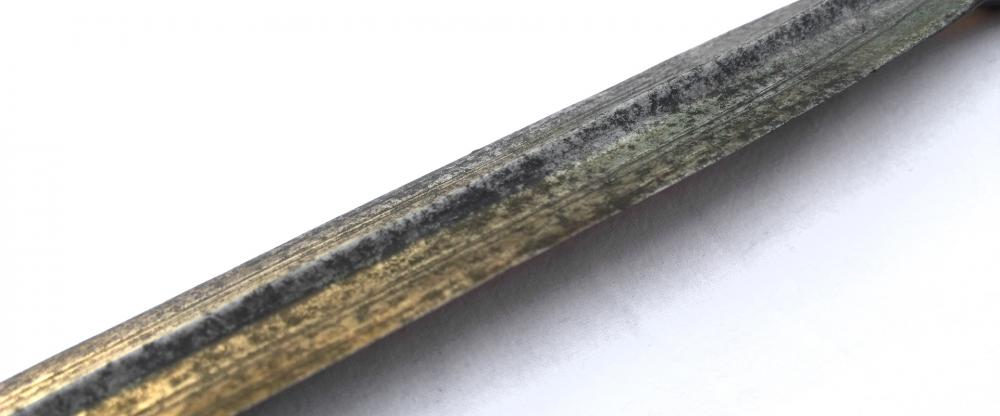
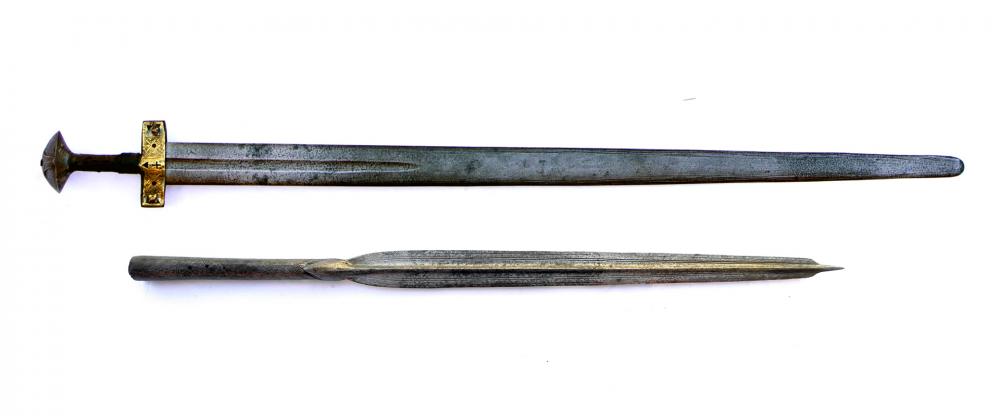

A few takouba (West African sword type) from my collection
in Swords & Edged Weapons
Posted
Hi Peter, looks like you might have posted the same post twice by mistake?